Radiology Research Programs
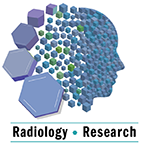
Research in Radiology is inherently interdisciplinary and technologically oriented. Our various research programs focus on the development, implementation, and validation of novel imaging technologies, image-guided therapies, and information technologies that seek to improve patient outcomes.
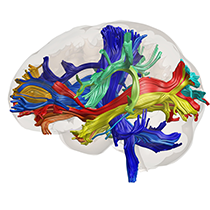
The Advanced NeuroScience Imaging Research (ANSIR) program is a premier imaging research program performing studies across the gamut of advanced neuroimaging methodologies and applications. The ANSIR program is devoted to the application of novel image analysis methods to research studies, as well as to robust clinical translation of these techniques. These techniques include functional MRI, diffusion imaging, arterial spin labeling, quantitative susceptibility mapping, graph theory, machine learning, deep learning, and magnetoencephalography.
The ANSIR program is involved in NIH-funded research of mild traumatic brain injury related to youth and high school football. The lab is also actively involved in developing novel deep learning approaches for molecular marker prediction in gliomas. Additional program expertise involves clinical and research applications of MR-guided high intensity focused ultrasound therapies and opening up the blood brain barrier for the delivery of neurotherapeutics.
Visit the ANSIR Program's website.

The Program in Applied Artificial Intelligence in Clinical Imaging (PAAICI) in the Department of Radiology reflects the broad range of work occurring in the department in the areas of basic discovery, translation and clinical applications of artificial intelligence and machine learning in patient care.
PAAICI helps to provide and coordinate the infrastructure to help faculty and trainees realize their goals in the development of new approaches in AI/ML and move these new ideas into clinical practice. In addition, it provides venues to facilitate collaboration and shared knowledge amongst investigators.
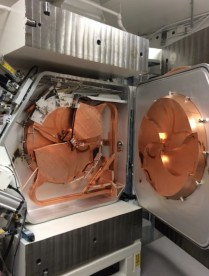
The Cyclotron and Radiochemistry Program (CRP) is a UT Southwestern Medical Center-wide effort to develop the full capability of nuclear imaging, namely radioisotope-based imaging, for noninvasive assessment of physiological processes and abnormalities in animal models and in humans.
With a biomedical cyclotron and the capability to synthesize a variety of biomedical radioisotopes, this program leverages the cutting-edge technology of positron-emission tomography (PET) to enable discoveries that span multiple areas of medicine and physiology.
Visit the Cyclotron and Radiochemistry Program's website.
High-Intensity Focused Ultrasound (HIFU) is a novel image-guided procedure that is currently FDA approved for the treatment of prostate cancer, fibroids, bone metastases, essential tremor, and tremor predominant Parkinson's Disease. There are no incisions, no anesthesia, and no implantable hardware. Varying the frequency and duty-cycle of ultrasound can result in different biological effects. Focused Ultrasound can be used for tissue ablation, neuromodulation, or to safely and non-invasively open the blood brain barrier (BBB) in a specific region of the brain. The HIFU Program is an eminently translational and multidisciplinary effort. In addition to the routine clinical use of MR-guided HIFU therapy in patients, investigators in the HIFU program lead multi-specialty efforts exploring new applications of this novel technology in various medical conditions.
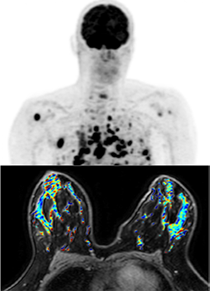
The process of generating images from raw scanner data and postprocessing the results before analysis play a critical role in image quality and contrast production. The Image Reconstruction program in the department of Radiology includes researchers focused on developing advanced in-house reconstruction methods and those with expertise in state-of-the-art reconstruction software tools for a range of modalities, including Positron Emission Tomography (PET), MRI, and Optoacoustic Tomography. These efforts aim to advance precision imaging, reduce scan time while maintaining image quality, and visualize new biomarkers both for human and preclinical subjects.
Visit the Image Reconstruction Program's website.
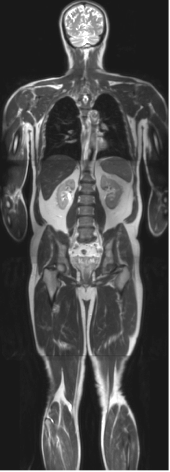
The Magnetic Resonance (MR) Research program in the Department of Radiology carries out fundamental research that leads to the development of new techniques, optimization of current techniques, and improved understanding of the pathophysiology of disease. Various aspects of the research include developing techniques for rapid imaging and evaluating novel methods to extract biologically and clinically relevant physiological information. Such advances in noninvasive imaging techniques allow not only appropriate diagnosis but also improved characterization of disease following therapeutic interventions without ionizing radiation exposure. An important goal of this program is to translate these technical advances rapidly into clinical practice for improved patient care.
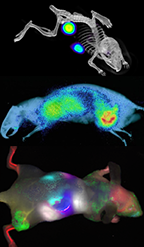
The Pre-Clinical Imaging Program seeks to develop, implement, evaluate, and apply diverse imaging techniques to enhance effective assessment of disease progression and response to therapy. A multi-disciplinary approach, the program includes the development and application of novel modalities, algorithms, and agents. The primary focus is cancer with a view to enhanced detection and characterization of tumors. Predictive imaging biomarkers will aid in optimizing choice of therapy to maximize response and cure. Research focuses on prognostic and predictive imaging biomarkers; hypoxia, tissue oxygenation, and its modulation; vascular targeting; reporter agents; and new imaging technologies.
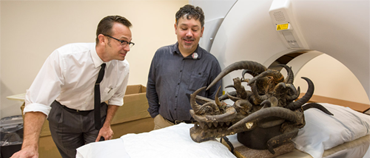
The Department of Radiology Spectral Computed Tomography Research program is dedicated to translating innovations in Dual-Energy CT diagnostic imaging to the clinic so that we can optimize patient outcomes. This includes the Dual-Energy CT scanners located at UT Southwestern Medical Center Clements University Hospital and Outpatient Building, Parkland Hospital, and Children’s Medical Center. Our research goal is to use Dual-Energy CT to discover new imaging biomarkers for disease detection and diagnosis. The Department is planning the installation of a photon counting CT.
The Translational Molecular Imaging Program (TMIP) in the Department of Radiology leverages multidisciplinary collaborations across campus to rapidly bring advancements in molecular imaging to patients so that their clinical outcomes are optimized. The TMIP leverages Departmental expertise in image acquisition, interpretation, and quantitative analysis of a variety of radionuclides. With access to state-of-the-art facilities in the Department, including a cyclotron, a Current Good Manufacturing Practice (CGMP) Laboratory, and the latest PET/CT and PET/MRI technologies, the TMIP can assist with research imaging endeavors at both the preclinical and clinical stages.
Translational Research in Ultrasound Theranostics (TRUST)

The Translational Research in Ultrasound Theranostics (TRUST) program develops and translates new generation of theranostic agents to diagnose and/or treat disease, specifically cancer. Our multidisciplinary team is led by 2 basic and 1 clinician scientists and is supported by outstanding and motivated graduate students, postdocs, and research staff with expertise in chemistry, formulation, ultrasound-sensitive materials, gene delivery, engineering and biology. The research focuses on:
- Enzyme-loaded nanoparticles and perfluorocarbon nanoemulsion formulation
- Targeted and bioresponsive ultrasound contrast agents
- Ultrasound-guided gene delivery
- Ultrasound-based immune modulation and therapy
- Ultrasound image processing
The Collaborative for Advanced Clinical Techniques in UltraSound (CACTUS)
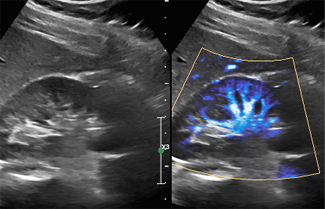
The Collaborative for Advanced Clinical Techniques in UltraSound (CACTUS) constitutes a group of like-minded physicians, scientists, and technical experts dedicated to the advancement of ultrasound imaging and image-guided intervention. Team members focus on high-quality clinical care through cost-effectiveness and workflow studies and protocol development. CACTUS also provides the environment and infrastructure to perform clinical and translational research imaging, vetting new ultrasound-based technologies through industry partnerships and testing novel techniques and technologies, all in a clinical setting.
